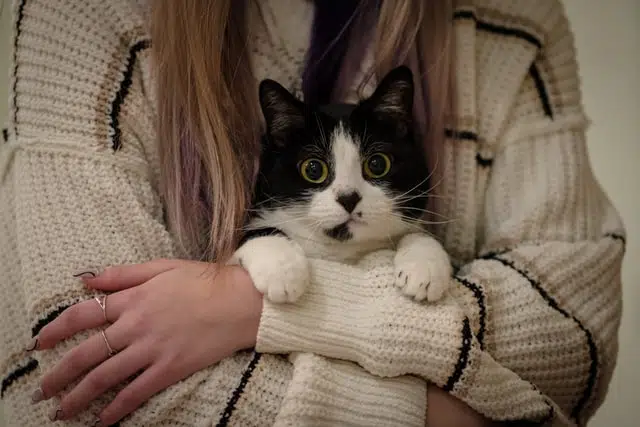Home » Blog » Pet » Pet Parenting Lifestyle » How to Budget for Vet Bills and Other Pet Care Costs
Categories
Tags
animal welfare
breed profile
buying a car
buying a pet
Car
car accessories
car care
car features
car insurance
Car safety
car sales
car service
cat
cat behaviour
cat body language
Cat Breeds
cat food
cat insurance
comprehensive car insurance
Dog
Dog Behaviour
dog body language
Dog Breeds
dog food
Dog Insurance
dog training
eco friendly cars
Kitten
New Car
pet accessories
pet activities
Pet Adoption
pet breeders
pet days of the year
pet fun stuff
Pet Health
pet insurance
pet parenting
Pet Safety
pet services
Puppy
rescue pets
road safety
road trip
safe driving
Recent Blog:
Facebook Posts
2 days ago
Growing old sometimes means we can’t take care of pets anymore. Find out some advice on what to do when this happens:![]()
![]() Senior Pet Parents – Contingency Plans for Your Pet – bit.ly/44bzwkS
... See MoreSee Less
Senior Pet Parents – Contingency Plans for Your Pet – bit.ly/44bzwkS
... See MoreSee Less
Senior Pet Parents' Contingency Plans for Pets
www.pd.com.au
Sometimes senior pet parents need more downtime. For older pet owners, this can be tricky to navigate if their dog or cat is full of beans and wants to4 days ago
Before you rev up the engine, let’s run through a checklist of things to do before starting your car. Not only do these steps ensure your safety (and that of others around you), but they also help in maintaining your vehicle's longevity.![]()
![]() Driving Tips: Your Checklist Before Starting Your Car -
... See MoreSee Less
Driving Tips: Your Checklist Before Starting Your Car -
... See MoreSee Less
Driving Tips: Your Checklist Before Starting Your Car
www.pd.com.au
Heading out for a drive? Hold up a second! Whether you're dashing off to work, running errands, or embarking on a road trip adventure, there are a few1 week ago
Are intestinal worms setting up camp in your dog’s gut without paying rent? Here’s how to spot the main culprits and get rid of them too:![]()
![]() Preventing, Identifying and Treating Intestinal Worms in Dogs - bit.ly/43YjCKu
... See MoreSee Less
Preventing, Identifying and Treating Intestinal Worms in Dogs - bit.ly/43YjCKu
... See MoreSee Less
Preventing, Identifying and Treating Intestinal Worms in Dogs
www.pd.com.au
Intestinal worms, such as roundworms in dogs are one of the least glamorous topics on the planet. These intestinal parasites that basically use our dogsAustralia’s economy is moving on from pandemic pressures into rising inflation and, along with it, surging interest rates, rents, food costs, utilities bills and more. For households who feel the pressures the most, it’s sometimes pets that take the fall. Unexpected vet bills and other pet care costs can be the first to go when you’re between a rock and a hard place.
In worst-case scenarios – which are unfortunately becoming more and more common – Australians are giving up their pets altogether despite that being the last thing they want to do.
Sometimes, understanding better budgeting can make a noticeable difference in the affordability of pet ownership. So… we’ve compiled these simple tips for budgeting for pet care costs. Hopefully it can help some families remain whole.
Vet bills and much more are forcing Aussies to give up pets
Animal shelters have reported a higher-than-usual number of requests over the past couple of years to take family pets, due to financial crises caused by COVID. This is unfortunately still increasing thanks mostly to rising inflation and the financial pressures it’s bringing households.
This is just as much a problem for our Kiwi cousins as it is for Australians. Hear what NZ’s leading no-kill animal shelter has to say about it:
“Over the past few years, we’ve helped a number of individuals who are living in their car, some with children. Sadly, these families seem overwhelmed, and due to their need to downsize they are surrendering their much-loved pets and farm animals for adoption.”
– HUHA CEO, Carolyn Press-McKenzie
We’ve explored this story for our side of the ditch in an article on why Aussies are giving up a pet to a shelter (despite not wanting to). Understanding the causes behind this sad situation can be hugely motivating, especially when put to good use.
In reality it’s often possible to navigate challenging financial hardships by careful planning and monitoring of your budget.

Budgeting for pet care costs
Some concepts never get old or go out of fashion. This is true of the timeless saying ‘prevention is better than cure’. It’s not just better, but usually also the easiest path to take.
Here are seven easy ways to budget for vet bills and other known or unknown pet care costs:
- Network with your community to share pet care (it can be simple and fruitful for everyone involved)
- Know the real cost of getting a pet beforehand
- Feed for health
- Make your own pet supplies instead of buying
- Groom to help prevent health issues
- Use virtual vet consults and vaccinate to avoid higher vet bills later
- Choose a pet plan to suit your pet and pocket

1. Networking can be mutually beneficial
So many people want a pet but don’t have time to own one full time, or can’t afford to get one. They could be your friend, your sister, or your neighbour and they could be hoping you’ll ask them to spend a bit of time with your pet.
“Network in your community for walking and playdates. You could build a relationship with someone who can pet-sit for you, and vice versa. In communities there are often lonely people who can’t afford pets – asking them to help with yours may benefit both parties. Just ensure you have clear guidelines between you to avoid misunderstandings around responsibilities and ownership.”
– HUHA CEO, Carolyn Press-McKenzie
You may be able to turn to them to help look after your pet during the day when you’re at work. This could help circumvent the pet care costs of doggy daycare in Australia, for example. That means you save where you need to and you help someone else fulfil their ‘pet broodiness’.
2. Know your costs beforehand
Some purebred dogs and cats cost more than others to buy. If you’re on a shoestring budget you’re less likely to afford a designer dog for example. But pet care costs don’t end there and certain breeds are more prone to genetic health concerns.
“Healthcare costs tend to go up with age, but a good diet and exercise along with pet insurance will help mitigate these costs and can be included in a budget.”
– Dr Cath Watson, veterinarian and Chair of Healthy Pets
Breed research for diet, exercise and longevity is important for choosing your pet and then taking care of it throughout its lifetime. If your future pet has a life expectancy of five years or 25 years it’s important to plan for their vet bills and health care costs accordingly.
Put money aside every week for pet care spend and consider taking out a month to month health insurance plan to reduce the cost of treatment for illness, injury, infection, allergies and more.

3. Good diet can be an effective preventative measure
At PD Insurance, we believe healthy pets are happy pets and this can result in fewer vet visits. Like people, pets thrive on a well-balanced nutritious diet. Feeding your pet the right food could literally save you from vet bills and other pet care costs by preventing them in the first place.
“Feed pets a well-balanced diet that meets AAFCO standards, as a minimum, so they get all the nutrients they need. Premium brands may cost more upfront, but you can feed less due to the higher quality ingredients, so it lasts longer. Dry biscuits are much cheaper than feeding wet food in any form and you can always add water to make a porridge. There’s no need to buy special treats but vegetables like carrots work well for dogs if you grow your own and have spare. If you want to use wet food, like pet roll, you can slice it thinly, bake it to remove the moisture and use dried pieces as treats.”
– Dr Cath Watson, veterinarian and Chair of Healthy Pets
Read about simple and affordable healthy dinner recipes for pets. You might also be interested in how to manage dog gut health and whether to choose dry cat food or wet.
4. DIY pet supplies
Another simple and entertaining way to cut on pet care costs is to make your own toys, beds, entertainment etc… Yep, we did say entertainment!
- Entertainment. Did you know cats and dogs like to watch TV (just like kids, not too much screen time though)? Plan your pet’s playlist with our cat tv article, and check out this dog tv option too.
- Exercise. Since walking is a cornerstone of doggy health, read how to make your own DIY dog walking kit.
- Training. A trainer or pet behaviourist may simply not fit your pocket. But with a bit of know-how training your own pet is entirely possible and helps you bond. Read these puppy training tips to get started.
- Safety. Read how to make your own dog thunder and firework protector plus how to build a dog kennel. Use Bunnings how-to video to better secure gates, fences and more. Also consider the safety benefits when asking the question ‘can dogs sleep outside‘. Every little tip counts.
- Playtime. Because one man’s trash is another man’s treasure, make your own pet toys using unwanted household items, like old t-shirts. Check this video out to see how it’s done:
5. Grooming is not just for looks
All animals groom. Think of monkeys lovingly picking critters out of one another’s fur. But this animal essential is not just for good looks, it actually serves several purposes. Grooming helps you identify health problems early on and can even help mitigate unwanted vet bills.
“Health care is an essential cost of caring for our fur family. Spending time grooming them and paying attention to their normal behaviour, appetite, etc, will help you detect problems much earlier, and – just like us – the sooner you can act on a problem, the easier it usually is to resolve.”
– Dr Cath Watson, veterinarian and Chair of Healthy Pets
Pet care for your dog or cat is an essential ritual that helps prevent issues like dog with skin conditions and ear infections, for example. Tick and flea treatment can even save your pet’s life from the dangers of tick paralysis or flea anaemia.
Here’s a quick list of essential grooming tips:

6. Other ways to reduce vet bills
Vet bills aren’t cheap and that’s because vets are performing medical procedures using techniques that take years to learn and costly equipment. Just like human doctors do.
Offset problems like this by using virtual vet consultations when you can, when needing to decide whether whatever your pet is having issues with needs a vet visit or can be solved simply otherwise. Also be sure to get familiar with your pet vaccinations schedule in Australia. You’ll almost certainly be giving your pet the best chance in life and preventing further vet costs later on.
Dr Cath Watson, veterinarian and Chair of Healthy Pets says “It is also important to make sure you are registered in advance with a veterinary clinic and keep up to date with preventative care like vaccinations, neutering, and flea and worm treatments. The cost of treatment is always higher than prevention. If your pet requires long term medication, talk to your vet about your financial concerns, as there may be alternatives you can consider.”
“Further, consider using an online vet consultation service when you’re just looking for advice and your normal veterinarian is not available to consult. This is safer and often cheaper than relying on Google or friends for advice and unknowingly purchasing expensive or inappropriate products.”
Managing your costs also helps reduce vet stress
You may not know it, but many vets face depression and risk suicide because of work pressures. Pet health has a major effect on vet mental health. One of the key factors behind this is not being able to treat animals that need it. Vets can’t be expected to provide free treatment to those who can’t afford vet bills.
Abbie Tipler, an Australian small animal specialist surgeon, says:
“Veterinarians are not just tired of the emotionally manipulative narrative that they must not care about animals unless they provide this care at a low cost – it is actually killing them. Veterinarians have 4x the suicide rate of the general population… As hardworking individuals, we go in into the profession optimistic and hopeful about saving lives. In fact we pay thousands of dollars to train to do just that. Veterinary specialists (similar to a human specialist) pay even more for training, and make sacrifices you can’t imagine. What we didn’t factor in, was the fact we would get daily abuse for doing our job, because we need to charge for this service”
One simple way to keep your pet (and vet) healthy is by understanding the difference between pet insurance vs savings.

7. Safeguard against vet bills with a pet plan
Many pet owners don’t realise the value of dog insurance and cat insurance until it’s too late. This can mean spending one’s life savings on much-needed pet health care costs, or not being able to afford them at all. But ideally you won’t have to choose either.
“Vet bills are a prime reason people are having to give up their pets, so get pet insurance and then if an accident happens you have financial support. Also, make sure your pet is desexed. We are seeing so many litters coming into the shelter that families are not in a position to care for.”
– HUHA CEO, Carolyn Press-McKenzie
Pet insurance is a small cost that doesn’t need to add any financial pressure to your life. Rather it reduces the financial loads of unexpected vet bills down the line and gives you added peace of mind.
PD Insurance will give you one or more months of FREE award-winning pet insurance if you sign up online. Plus, we provide discounts for policies that cover more than one pet. Click for more details below.
Share On:




